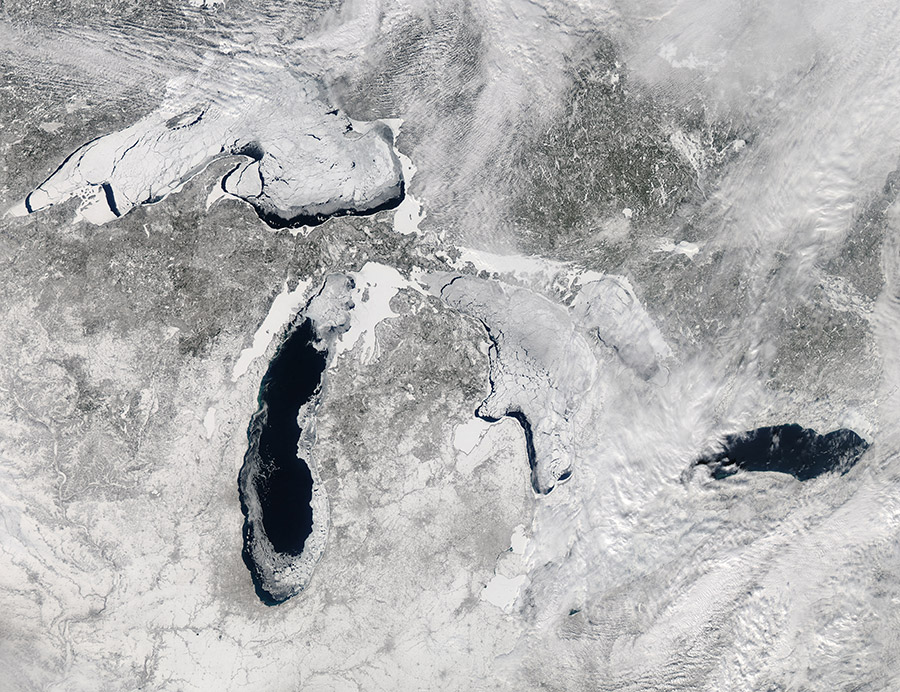Moisture
Because the lakes are ice free for the beginning of the winter, they provide ample moisture when the cold winds blow across them to help create the lake effect snow events. As the winter progresses, snow and ice begin to cover the lakes. This causes the available moisture to diminish and essentially ends the lake-effect season. Lake Erie season often ends in early February, where as the rest of the lakes can maintain the potential for lake effect snow into March.

Satellite Image from February 2014. Roughly 80% of the Great Lakes are frozen over. Source: Jeff Schmaltz, LANCE/EOSDIS MODIS Rapid Response Team | NASA
FUN FACT:
Of the 5 Great Lakes, Lake Erie is more likely to freeze completely due to its smaller water volume (116 cu mi) and a lower maximum depth (210 ft.) compared to the others which only freeze over occasionally.